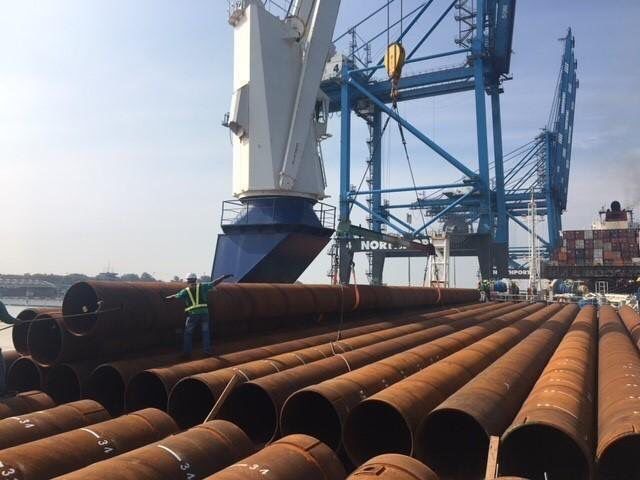The cold working method of seamless steel pipe, includes cold rolling and cold drawing method to produce a complete set of equipment for the pipe.
It is a unit for deep processing of hot rolled pipe or welded pipe. The production characteristics of cold-rolled precision steel pipe processing pipe unit is that the pipe material is usually subjected to multiple cold deformations and work hardening from the input to the finished product.
Therefore, the whole production process consists of multiple preparation processes and deformation processes, and has the characteristics of reciprocating cycle. This will involve many processes, long production cycle, large metal consumption, low production efficiency, high precision, bright and smooth inner and outer surfaces, no peeling, no cracks, no pits.
Different processing methods and corresponding auxiliary processes are selected according to the processing properties of the metal, the pipe size, the quality requirements, and the investment and benefits. The basic processes of cold-rolled precision steel pipe and cold drawn precision steel pipe are as follows:
(1) Pipe material supply, the pipe material used is hot-rolled seamless steel pipe finished pipe or pipe blank semi-finished pipe, extruded pipe and spiral welded steel pipe;
(2) Pipe Preparation of materials, including inspection, bundling, pickling, washing, rinsing, neutralization, drying, and coating of lubricants.
(3) Cold working (cold rolling or cold drawing);
(4) Finishing of finished products including heat treatment of finished products, correction Straight, sampling, cutting head and tail, inspection (manual inspection and various flaw detection), hydraulic test, oiling, packaging, storage, etc. Different product finishing content is different.
Bright precision tube performance
1. Light weight, high strength, convenient transportation and installation.
The fiber-wound fiber-reinforced FRP pipe has a specific gravity of 1.65-2.0, which is only 1/4 of the steel, but the hoop tensile strength of the precision steel pipe is 180 – 300MPa, and the axial tensile strength is 60 – 15OMPa. alloy steel. Therefore, its specific strength (strength/specific gravity) is 2 to 3 times that of alloy steel. In this way, it can meet the user’s requirements, and is designed to meet all kinds of pipelines that withstand internal and external pressure requirements.
For single weights of the same pipe diameter. The FRP pipe is only 1/2.5 of carbon steel pipe (steel coiled pipe), 1/3.5 of cast iron pipe, and about 1/8 of pre-stressed reinforced concrete pipe, so transportation and installation are very convenient. The precision steel pipe has a length of 12 meters per section, which can reduce the joint of the concrete pipe by two-thirds. Its socket connection method makes installation quick and easy, and reduces the lifting cost and improves the installation speed.
2. Anti-fouling and anti-mite
The surface of the unsaturated polyester resin is clean and smooth, and will not be contaminated by microorganisms such as shellfish and fungi in the marine or sewage, so that the roughness is increased, the cross section of the water is reduced, and the maintenance cost is increased.
The precision steel pipeline has no such pollution, and the long-term use is as clean as ever. At the same time, due to its smooth inner wall and excellent corrosion resistance, it does not produce scale and microbial growth, effectively guarantees water quality and maintains water resistance stability. However, the traditional pipe has the phenomenon of increasing water resistance and surface fouling in the future.
3. Heat resistance
At a temperature of minus 30 °C, it still has good toughness and high strength. It can be used for a long time in the range of minus 50 °C to 80 °C. The specially formulated resin can also work at temperatures above 110 °C.
4. Good corrosion resistance
Precision piping is resistant to acid, alkali, salt, seawater, untreated sewage, corrosive soil or groundwater, and many chemical fluids. It has a longer service life than traditional lsaw steel pipes, and its design life is generally more than 50 years.
For the sand-filled FRP pipeline, it is more used in municipal and urban transmission and distribution pipelines. Because it is non-toxic, rust-free, tasteless, no secondary pollution to water quality, no need for corrosion protection, and greatly prolonged service life. It is easy to install and so on, so it has been welcomed by the water supply and drainage industry.

